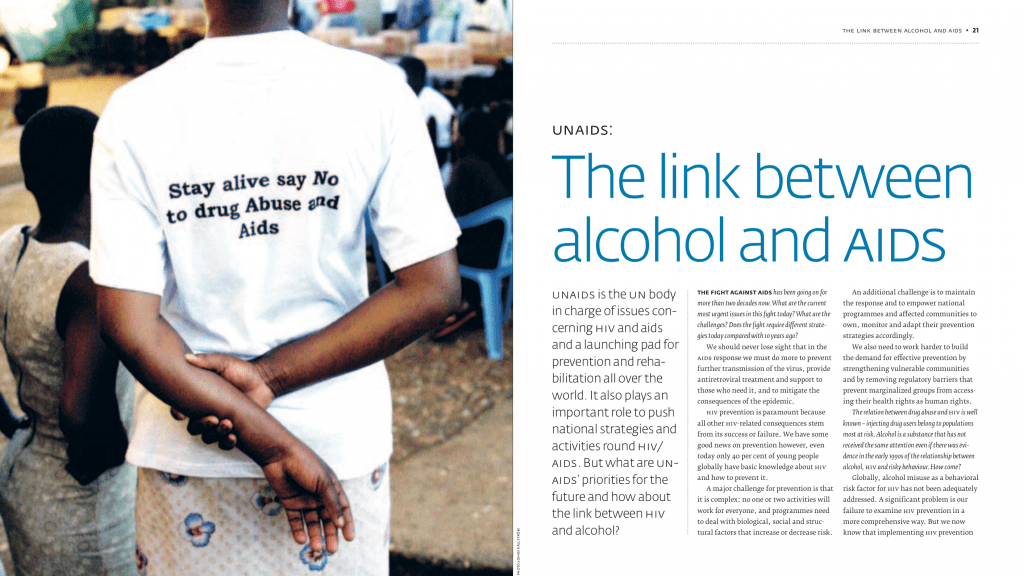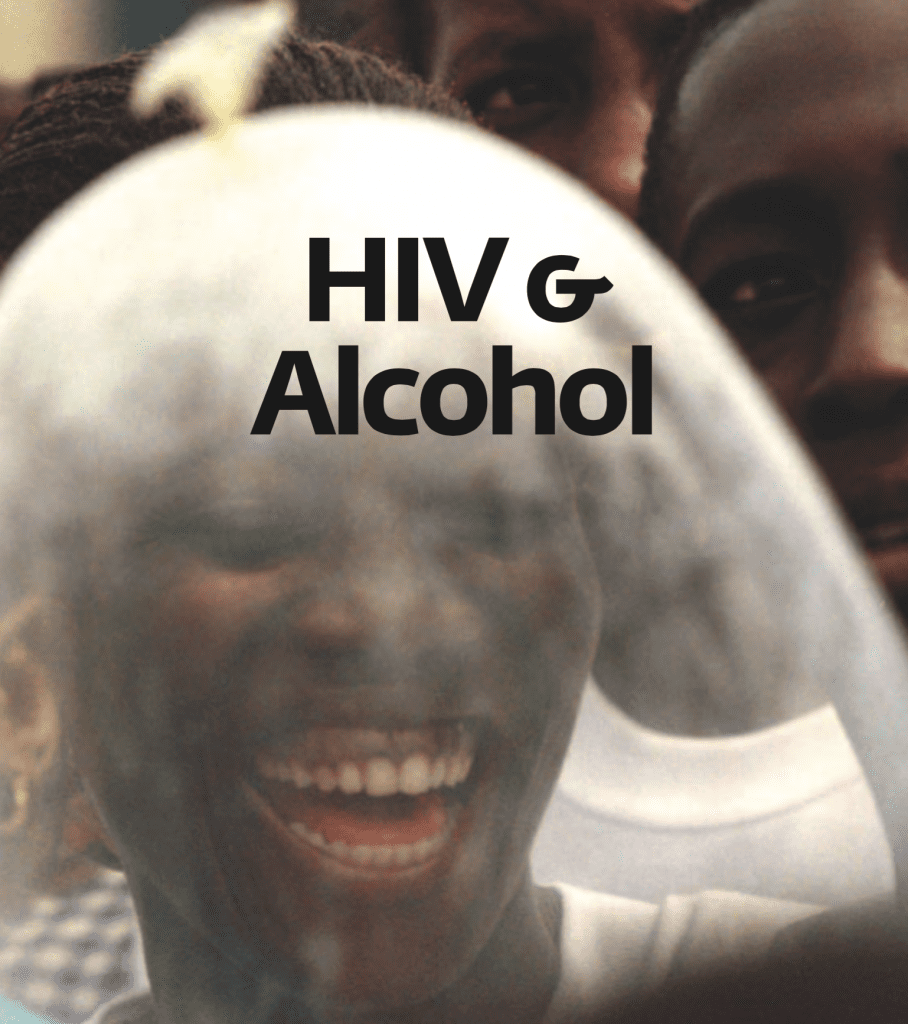It’s World AIDS Day and we call for strong efforts to really “get to zero”.
These efforts must comprise alcohol policy solutions that reduce alcohol availability, that make alcohol less affordable, that ban alcohol advertising, and that create more alcohol-free environments. It’s what we call the three best buys, plus one.
Alcohol fuels the HIV/ AIDS epidemic
Alcohol is widely established as
a structural driver of both the tuberculosis and HIV/AIDS epidemics.
- Alcohol use increases the risk of infectious diseases by increasing the risk of transmission (resulting from an increased risk of unprotected sex) and by increasing the risk of infection and subsequent mortality from HIV/ AIDS and tuberculosis (TB) by suppressing a wide range of immune responses.
Causal relationships exist between:
- Alcohol use and HIV incidences,
- Alcohol consumption on HIV/ AIDS patients’ adherence to antiretroviral treatment, and
- Alcohol use and HIV/ AIDS disease progression among patients who are not yet on antiretroviral therapy.
Yes, alcohol plays a tremendous and often overlooked role in the global HIV/ AIDS epidemic.
Here’s the story
Since 2011 the UN says: “WORLD AIDS DAY THIS YEAR IS ABOUT “GETTING TO ZERO.”“
Backed by the United Nations, the “Getting to Zero” campaign runs until 2015.
The global HIV response is at a pivotal moment, where huge strides forward are at serious risk and current approaches are reaching their limits – because, among other reasons, evidence-based, high-impact alcohol policy measures are not being adequately employed to fight the HIV/AIDS epidemic.
Only one third of the 15 million people living with HIV and in need of life-long treatment are receiving it. We know thatHIV/ AIDS medication often ends up in informal brews, instead. New infections continue to outpace the number of people starting treatment.

According to the U.S. National Institute on Alcohol Abuse and Alcoholism (NIAAA), there is increasing evidence that there is no »safe level« of alcohol consumption for persons receiving treatment.
We also could see that the upward trend in resources suffered a serious downturn this year, which makes it all the more imperative to use alcohol policy measures, like tax increases on alcohol products, in order to create a “double bang”:
- More financial resources for public health promotion;
- Less alcohol harm, including HIV/ AIDS.
The United Nations proclaimed that: “Zero New HIV Infections” and “Zero Discrimination” are equally as likely to spark high impact events from small scale community vigils to nation wide events using the universally recognized shape of zeros and the power of light to get life and death issues the attention they deserve.
For December 1, 2011 right up until 2015 it was envisioned that different regions and groups will each year choose one or all of the Zeros that best addresses their situation.
2013, we choose “Zero new infections” and using alcohol policy measures helps to achieve this goal.
At least half of “getting to zero” goals are alcohol-related
At least half of the goals for the “getting to zero movement” clearly are alcohol-related:
- Sexual transmission of HIV reduced by half, including among young people, men who have sex with men and transmission in the context of sex work;
- TB deaths among people living with HIV reduced by half;
- All people living with HIV and households affected by HIV are addressed in all national social protection strategies and have access to essential care and support;
- HIV-specific needs of women and girls are addressed in at least half of all national HIV responses;
- Zero tolerance for gender-based violence.
Our booklet on alcohol and HIV/ AIDS addresses the connections:
- Alcohol weakens the immune system, making the body more susceptible to the HI virus.
- Alcohol plays a major role in risky behaviour, like unprotected sex.
- Alcohol is a factor in sexual abuse and rape of women and girls.
- Alcohol is an important factor in disease progression – it may accelerate the infection, affect adherence to medication, and decrease the chance of survival.
In our booklet, UN AIDS says themselves:
Globally, alcohol misuse as a behavioral risk factor for HIV has not been adequately addressed. A significant problem is our failure to examine HIV prevention in a more comprehensive way. But we now know that implementing HIV prevention in a piecemeal manner will give piecemeal results.”
UN AIDS, 2008
For comprehensive results, for finally getting to zero, for all the victims, their families and for all the children around the world directly and indirectly affected by HIV/ AIDS, it is high time to include alcohol policy measures into the overall response to AIDS.

